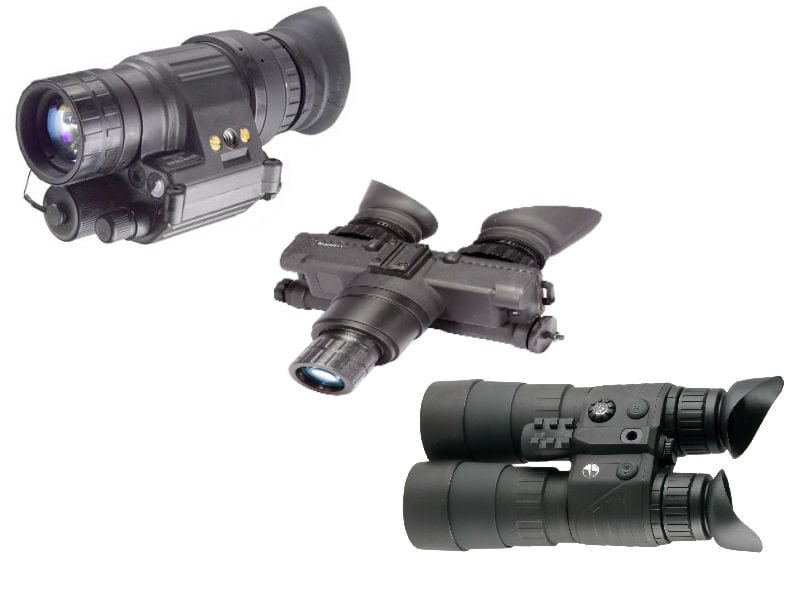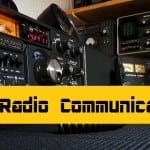Night vision…it’s the equipment that preppers drool over. Even outside of the prepper-realm, I do not think there is a single person I have met that has not had a fascination with it. Whether it’s adolescent boys who see the night vision goggles on video games and GI-joes, to your every day mom or pop…people love to turn night into day! Aside from the “cool factor”, night vision plays a very important “force multiplier” role in the military and for preppers.
However, do you really know what you’re getting in to?
Night Vision Generations
Night vision can vary from a couple hundred dollars for a GEN1 device to several thousand for a GEN4 device. The image intensifier tube is the heart and soul of an NVD and the basis of the different generations. As you can imagine, the higher generation, the better quality (both resolution and low light amplification) and more astronomical price range.
So, what’s the sweet spot for the average prepper?

- GEN 1 is typically geared towards hunters and outdoorsmen.
- GEN 2 is typically for law enforcement or professional applications.
- GEN 3-4 is reserved for more military/shooter applications.
Note: If you want the full blown technical difference between the generations and tube variants, you can read this article.
If you have loads of money, you’ll probably by a GEN3-4 and this article is a mute point. However, for those of us on a budget, I would suggest buying a GEN1 to GEN2+ and a good infrared flash light. A supplemental infrared flashlight can dramatically increase the clarity of any night vision device. Some would argue that a good infrared flash light can increase the clarity by a whole night vision generation. For example, look at this comparison of infrared lights with a PVS14 NV device. Without the IR light, it’s still dark and grainy. However, when your throw in the IR light, everything becomes much less grainy and incredibly clear. Again, IR lights help with illumination and grain for any generation NV device. Now while an IR light won’t turn a GEN 1/2 into a 3/4 you can still save yourself thousands on that GEN3/4 device and invest a couple hundred in an infrared flashlight.
However, ensure you are prudent and sparing with the IR flash light’s use. If someone else has NV, they can see you from a mile away! A cheap IR flashlight I own is a NiteCore. Surefire’s are better as seen in the video, but at the cost of several hundred more dollars.
Monocular, Bi-ocular or Binocular
In terms of housing, there are three (3) types. Personally, I use a monocular goggle with a sturdy headset due to four reasons:

- I feel that it is comfortable due to less weight on my face.
- I can mount it on my weapon (if your NV monocular supports weapon mounting) in addition to my head.
- I can preserve natural night vision in one eye if my device fails for some reason.
- Bi-ocular or binocular setups will cost you a great deal more.
Below is a snippet from Opticsplanet.com on the three different types and differences.
Monocular goggle – As the name suggests, this goggle uses a monocular mounted to a headset. This is the lightest and least expensive type of night vision goggle (night vision system), but since you are using only one eye and one optical system, it will not be as comfortable to use as a system with two eyepieces, nor will it provide any depth perception.
Bi-ocular goggle – The bi-ocular goggle feature two eyepieces, but only one front lens. This improves viewing comfort over a monocular goggle, but because there is only one front lens, there is no improvement in depth perception over a monocular.
Binocular goggle – The binocular goggle uses two eyepieces and two front lenses. This not only provides better viewing comfort than a monocular, it also provides depth perception since it is using two different optical systems. This is an important feature if you are using a goggle while in motion, say walking or even driving off road.
Weapon or Head Mounting (very important)
So, you’ve invested some research into the generations of night vision, housing and manufacturers. Now, how exactly do you intend to use it?
- Are you using it strictly for a spotting scope?
- Do you intend to mount it on your weapon?
- Do you want to mount it to your head as an optic?
One of the biggest disadvantages to night vision in combination with prepper firearm training is you need a training facility or private land that will allow you to train at night. That being said, many preppers have no idea what all equipment is needed in different night vision circumstances.
Surveying/Spotting – This is probably the most basic non-combative use. You want the NV so you can patrol or scout out areas. For this use, I like the non-magnified monocular that I can either hold in my hand, or attach to my head mount.
Weapon Mounting – Some manufacturers like Armasight allow the night vision device to be directly mounted to weaver/picatinny rail. Again, the monocular fits well into this category. This is all well and good, but there are two big considerations:
1. Is your NV device compatible with your optic? An optic like the COMPM4 Aimpoint has a special low power setting to be compatible with night vision. Additionally, you’ll need to consider measurements of height to ensure your optic and NV align properly.
2. This setup is only practical for an ambush scenario where you are stationary and have your weapon mounted in a prone or otherwise stable position. If you think you are going to scout out an area for 30 minutes to hours with the rifle plugged up against your face, you’re in for a rude awakening. First, your arms are going to be exhausted. Second, if you find yourself in a scenario where you need to be dynamic and run, you are going to need to have that weapon system always attached to your face so that you can see. Third, consider that every time you drop the weapon away from your face, you are pretty much night vision blind in one eye as you’ve been staring at a bright green picture.
Patrolling – Now the last category…patrolling. Let’s say you are scouting your homestead and you have a night vision device mounted to your head/face. You find a threat and you need to engage. Exactly how are you going to get a cheek weld on your rifle and align your night vision device through your optic? Basically…it’s impossible. It will take forever to align the optic and night vision device, it will feel terribly awkward, and will likely be very blurred to the point of where you cannot see anything.
The answer – you need to have an infrared laser. The situation is very much like gas masks. Law enforcement and military are always plagued by the annoyance of getting a good cheek weld on their rifle while using a gas mask. To help, personnel make use of a visible laser so that the rifle can be fired without having a cheek weld.
For night vision, an infrared laser zeroed on your rifle is essential for when the NV device is mounted on your face….otherwise, you are pretty much useless. Although there are many brands available, a very good class I IR laser is the Steiner OTAL-C IR.
Summary
As you can see, there is a good deal of planning you need to do before you invest in night vision. However, please don’t let that dissuade you from pursuing the purchase. A former army ranger that I spoke with said he knows many individuals that own 4+ rifles, but will not spend the money on night vision because “it’s too expensive.” Meanwhile, they are blowing their money on multiple AR-15s that don’t really add to their combat effectiveness. With almost half of every day in darkness, the few that have NV devices will have a significant advantage over those that do not!
My setup as an example:



